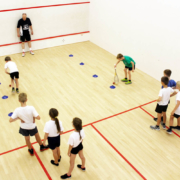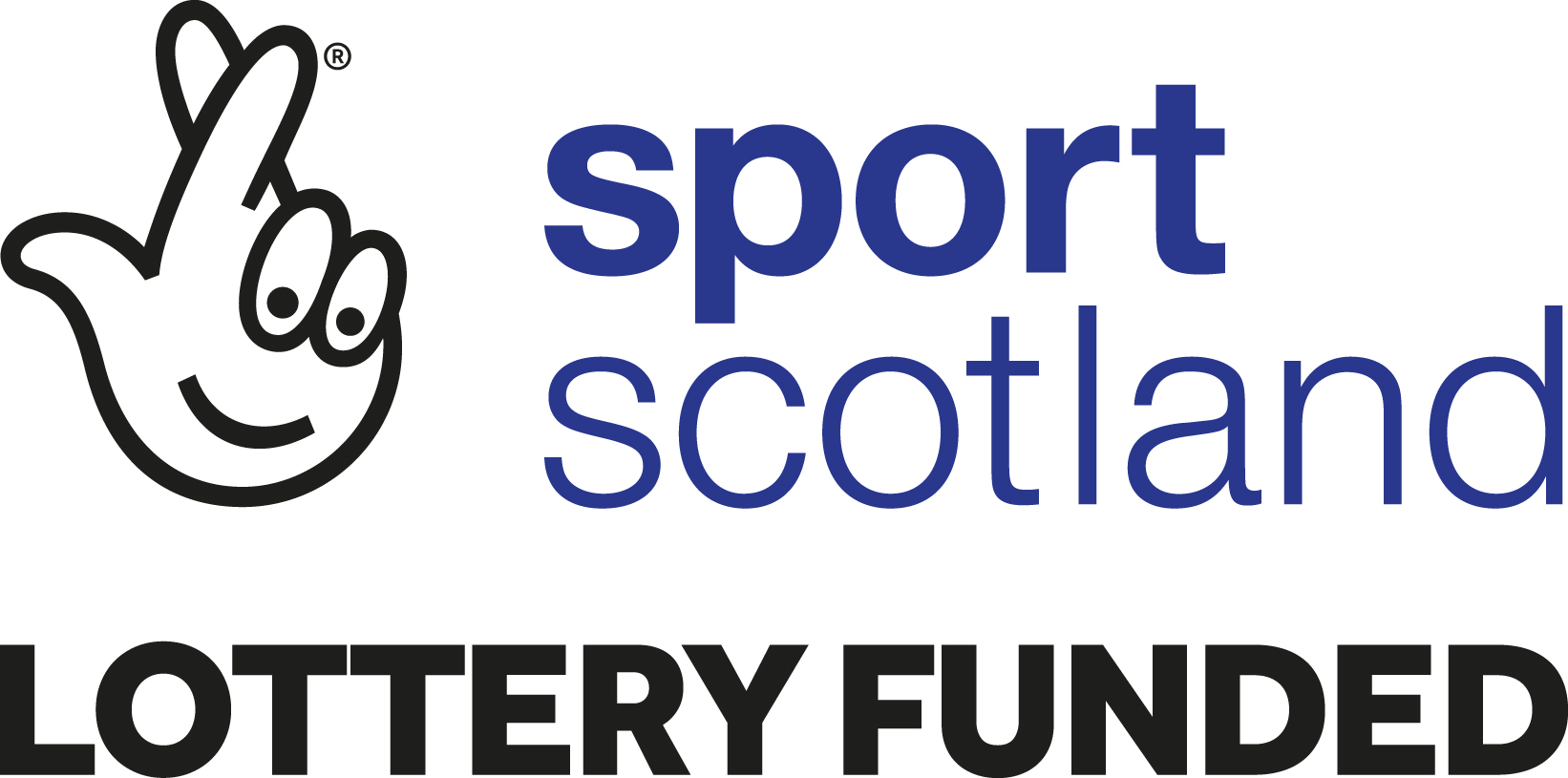Income remains barrier to sporting participation in Scotland according to industry experts
Industry experts from Scottish Squash, Basketball Scotland and Cricket Scotland have said that the cost of participation in sport remains a key barrier for children from lower income families, though progress has been made in this area. Leaders from across the sector are also hoping that sport and physical activity will play its part in the nation’s recovery from the coronavirus pandemic, despite the challenges currently facing the sector.
Maggie Still, CEO of Scottish Squash said: “Squash is a sport that encourages health and wellbeing; it is fun and energetic. At Scottish Squash we want young people to play the game for enjoyment, and also because we know that sport can transform lives.
Despite the benefits, we know that a huge number of disadvantaged young people are not involved in structured sport or physical activity, due in large part to the cost of participation, as well as activities being offered in a way that isn’t attractive to young people.
We can also see how the current cost of living crisis will put more pressure on sporting participation for young people, as parents have to make difficult choices about how they spend their money. For example, with fuel prices rising by over 100% in some areas, the cost of transporting young people to sporting clubs and competitions is going to become an even bigger issue.
Through sportscotland and sponsored investment, we are taking steps to level the playing field by recruiting a national development manager to work with clubs, coaches and facilities to attract more young people into squash. We will be looking at potential barriers such as cost, timing, location and environment, as well as supporting young people on the squash player pathway.”
Adam Szymoszowskyj, Social Impact & Engagement Lead at Basketball Scotland said: “For us the cost of participation is a big one, whether its funding sporting equipment, club membership or the cost of transport between basketball clubs and venues. If families are struggling to heat their homes, then sport and exercise isn’t a priority. Other barriers we see include peer pressure and the negative influence of gangs, especially in the more deprived areas of Glasgow.”
Nicola Wilson, Head of Development at Cricket Scotland added: “Access to clubs is a key barrier to entry, as not everyone lives nearby, and the cost of transport can be a real issue. Cricket clubs are also based on a membership model, with monthly fees and subs, and although many offer free introductory sessions, longer-term involvement will come at a cost. Access to equipment and the associated costs also comes into the equation.
We also know that among children, Cricket is competing with more popular sports such as football in what we call the ‘battle of the playground’. Schools also tend to focus resources on football, whether that be through coaching or access to facilities, and that compounds the marginalisation of some other sports.”
These sentiments are backed up by the ‘Sport and Social Inequality Report’ published by the Observatory of Sport in Scotland (OSS) in March 2020, which drew clear links between falling numbers of sport participants across the ages in Scotland and levels of deprivation and education. It concludes family income is the major reason for sport declining in many parts of Scotland.
Professor Tess Kay, Head of Sport at University of Stirling and author of the OSS Sport and Social Inequality Report said: “Social disadvantage in its many guises – low income, socio-economic status, poor education – are the characteristics that underpin inequalities and account for the deprivations that disproportionately affect groups with particular characteristics.”
The Scottish Government’s Active Scotland Outcomes Framework found that the exclusion of school-based activities such as PE, is also widening the inequality in sports participation by children from lower income families. Meanwhile, the Scottish Housing Survey 2018 points to inequalities in education another influencer. It found that only 55% of adults who left school with no qualifications registered any participation in sport, compared to 91% of those who left educated to degree level.
Despite the challenges, a range of initiatives have been put in place across Scotland to improve access to sport. For example, Scottish Squash have a ‘Schools Squash’ programme which introduces the fundamentals of squash into schools across Scotland, improving accessibility and visibility for the sport to a wider audience. The association has also introduced a ‘Going for Gold’ scheme which aims to create sustainable opportunities for juniors to play and develop.
Maggie Still continued: “We recognise that participation in sport is not cheap so we are implementing a School Squash resource; a pack that can be picked up by any teacher and used to lead squash type activities, develop racket skills, hand eye coordination and fitness in children. This will give access to squash to many more young people across the country.
Through the Scottish Squash Young Ambassadors Programme, we are also promoting young role models and by developing strong partnerships with organisations such as Springfield Properties and sportscotland, we are investing in local clubs to help attract young people into free squash coaching sessions.
Scottish Squash has also recently achieved Intermediate Standard in The Equality Standard: A Framework for Sport which was launched by the UK Sports Council in 2004 to address inequalities within the sector.”
Some local squash clubs are also taking it into their own hands by running community-based initiatives that improve accessibility to the sport. Scotstoun Eagles is a community club based at the local authority run Scotstoun Leisure Centre in Glasgow formed after the Commonwealth Games in 2014. The club is providing free coaching sessions to local schools in some of the poorest areas of Glasgow, as well as offering accessible membership models.
Martin Woods, Head Coach at Scotstoun said: “We see a big difference in the hand to eye skills and physical development of kids from private schools, compared to state educated children because young people from poorer areas haven’t had access to the same opportunities.
We’re tackling this by introducing squash to local primary schools in deprived areas – for example, we offer free coaching sessions at White Inch Primary School in the west end of Glasgow. Squash often isn’t on the radar for many of these children, so this is a way to take the game to them. We set up a court in the school grounds and get the kids playing – it’s free, easy and accessible to all.
We also have a pay as you play membership so players can pay when they can, as well as affordable packages which include free coaching sessions throughout the week.”
Meanwhile, Basketball Scotland has been involved in a pioneering project to not only help tackle inequality in sport, but also anti-social behaviour and the associated mental health issues that some young people face.
Adam continues: “We have secured funding from the CashBack for Schools initiative to set up our Cashback School of Basketball scheme, where we aim to change lives through basketball. As part of our new programme, local basketball coaches are hired to work with a ‘core group’ of 48 young people from Lochend High School, St Andrews High School and St Mungo’s Academy in East Glasgow. Our coaches help these young people be active and learn life skills through sport and we have a team of youth workers who support each young person off the court to overcome life’s challenges.”
Nicola Wilson from Cricket Scotland added: “We work with a range of partners delivering community-based cricket sessions in low Scottish Index of Multiple Deprivation (SIMD) areas across Scotland. Our philosophy is to bring cricket to communities, working closely with schools, local authorities, and charities to provide free cricket without the pressure or expectation on participants to transition to a club.
For example, we deliver a programme called Wicketz through the Lord’s Taverners charity, which brings cricket to young people aged 8-19 living in deprived communities. The programme establishes sustainable community cricket hubs with all year-round weekly cricket sessions, with a focus on breaking down barriers, developing life skills and creating stronger communities.
We also work with ‘Chance to Shine,’ a national charity that gives children from lower income families the opportunity to play, learn and develop through cricket, as well local charities such as Beyond Boundaries which delivers the popular ‘All Stars’ cricket programme to local communities at no cost to participants.
Our goal is to use cricket to change lives, though life-skills workshops and other initiatives that aim to help our participants live healthier, make good life decisions and create opportunities in life that go way beyond cricket.”
Chief Executive of sportscotland, Stewart Harris concluded: “Sport and physical activity will continue to play a central role in Scotland’s long-term recovery from the coronavirus pandemic and it is vital that we continue to work in collaboration to address the challenges that lie ahead.
“It remains a challenging time and there is no doubt that barriers to participation exist in communities across the country. We will continue to do all that we can to support our local and national partners to increase opportunities to take part in sport and physical activity as we emerge from the pandemic. We must consider all available options to help address inequalities.”




